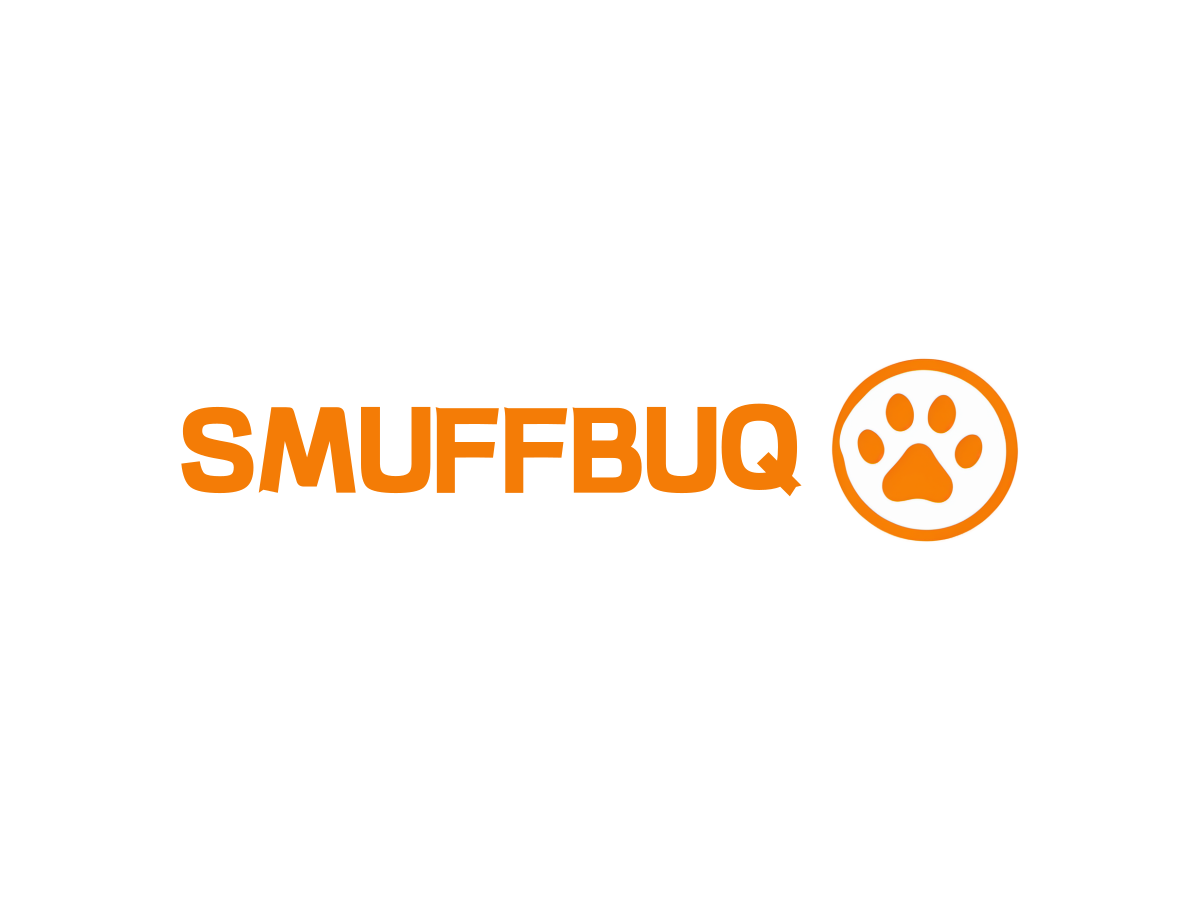What Material of Leash is Better for Dogs?
Dog owners face overwhelming choices when selecting leashes, with materials ranging from nylon to leather to biothane. Making the wrong choice can lead to discomfort, safety issues, and premature replacement.
**The best leash material depends on your dog’s size, behavior, and usage conditions. Nylon offers affordability and durability, leather provides comfort and strength, while biothane combines Nylon offers affordability and durability1, leather provides comfort and strength, while biothane combines water resistance with durability
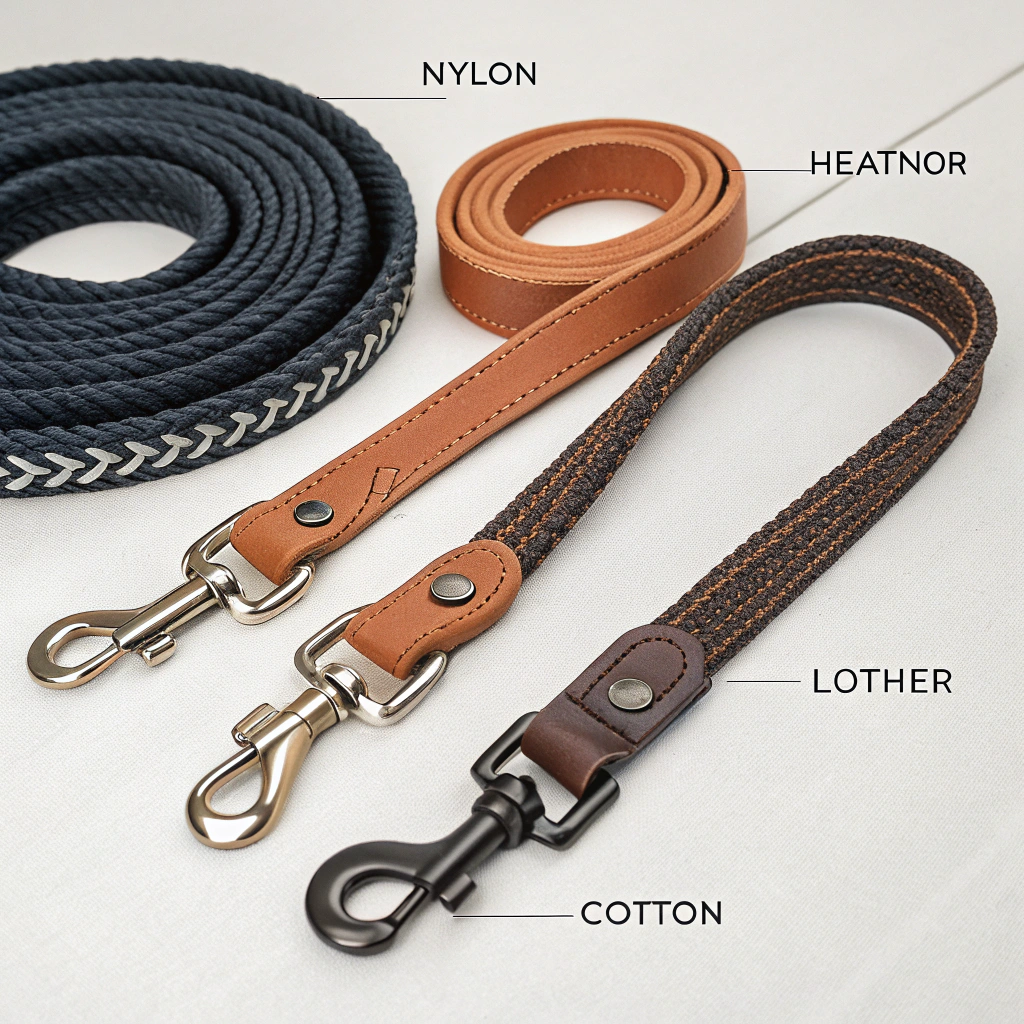
Over my years working with mold manufacturers who produce pet accessories and through my personal experience with multiple dogs, I’ve learned that leash material significantly impacts both safety and enjoyment of walks. Let’s explore the pros and cons of different leash materials to help you make the best choice for your furry companion.
What is the Best Material for a Dog Leash?
When I first got my German Shepherd, I bought the cheapest nylon leash I could find. Within weeks, the material frayed from regular use, creating a safety hazard during our walks.
**The best dog leash material depends on specific needs: premiumThe best dog leash material depends on specific needs: premium nylon webbing offers excellent strength-to-weight ratio and affordability; genuine leather1 provides durability, comfort, and develops character over time
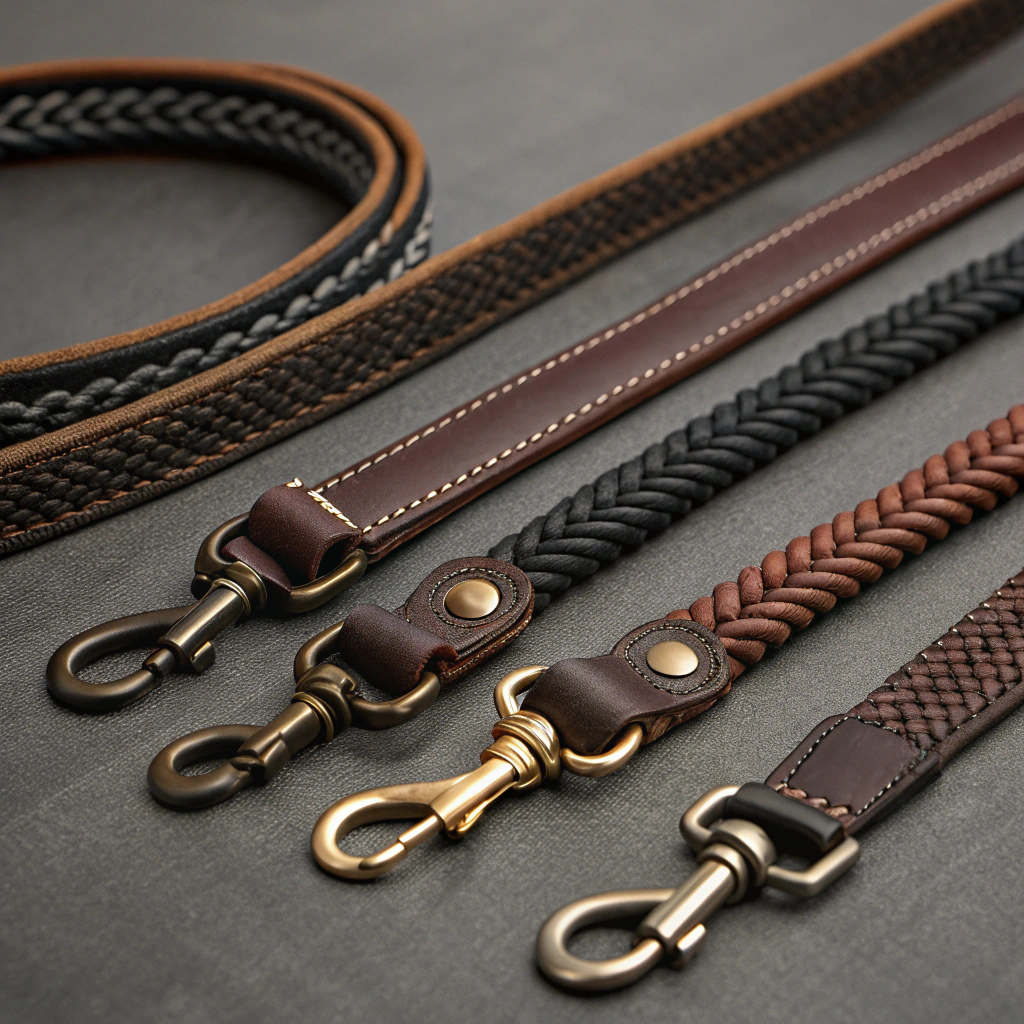
Having toured manufacturing facilities that produce pet accessories, I’ve gained unique insights into how different leash materials are created and their inherent qualities. Each material has distinct advantages and limitations that make them suitable for different scenarios and dog types.
Comparing Common Leash Materials
Through my experience with product design and manufacturing, I’ve compiled this detailed comparison of popular leash materials:
| Material | Durability | Weather Resistance | Comfort | Maintenance | Cost | Best For |
|---|---|---|---|---|---|---|
| Nylon | Medium-High | Good | Medium | Easy to clean | $ | Everyday use, budget-conscious owners |
| Polyester | Medium | Good | Medium | Easy to clean | $ | Lightweight needs, smaller dogs |
| Cotton | Low-Medium | Poor | High | Requires washing | $ | Sensitive hands, training |
| Leather | High | Medium | Very High | Requires conditioning | $$$ | Long-term investment, comfort-focused |
| Biothane | Very High | Excellent | Medium | Very easy to clean | $$ | Wet conditions, active dogs |
| Chain | Very High | Excellent | Very Low | Minimal | $$ | Extreme chewers only |
| Hemp | Low-Medium | Poor | High | Requires washing | $$ | Eco-conscious owners |
During my factory visits, I noticed that quality varies tremendously even within the same material category. For example, the difference between standard nylon webbing and For example, the difference between standard nylon webbing1 and premium military-grade nylon is substantial in terms of durability and performance
I’ve found that nylon remains the most versatile option for most dog owners due to its balance of affordability, durability, and functionality. However, for those willing to invest more upfront, a high-quality leather leash often provides better long-term value, developing a comfortable patina while maintaining strength for many years. In my personal collection, I have a leather leash that’s been in use for over eight years and shows no signs of structural weakness.
For specialty needs like water activities or extremely dirty environments, biothane has become my go-to recommendation. Its synthetic composition provides leather-like strength with superior weather resistance and cleaning properties. During a recent hiking trip with my dog through muddy terrain, the biothane leash simply required a quick rinse while my friend’s nylon leash needed thorough washing and drying.
What is the Best Type of Leash for a Dog?
After trying various leash types with different dogs, I learned that matching the leash type to both the dog’s behavior and the intended use scenario makes all the difference in walking experience.
The best leash type depends on training level and activity: standard 6-foot flat leashes work best for most everyday scenarios; traffic handles provide extra control in crowded areas; adjustable leashes offer versatility; while specialty types like hands-free or training long lines serve specific purposes.
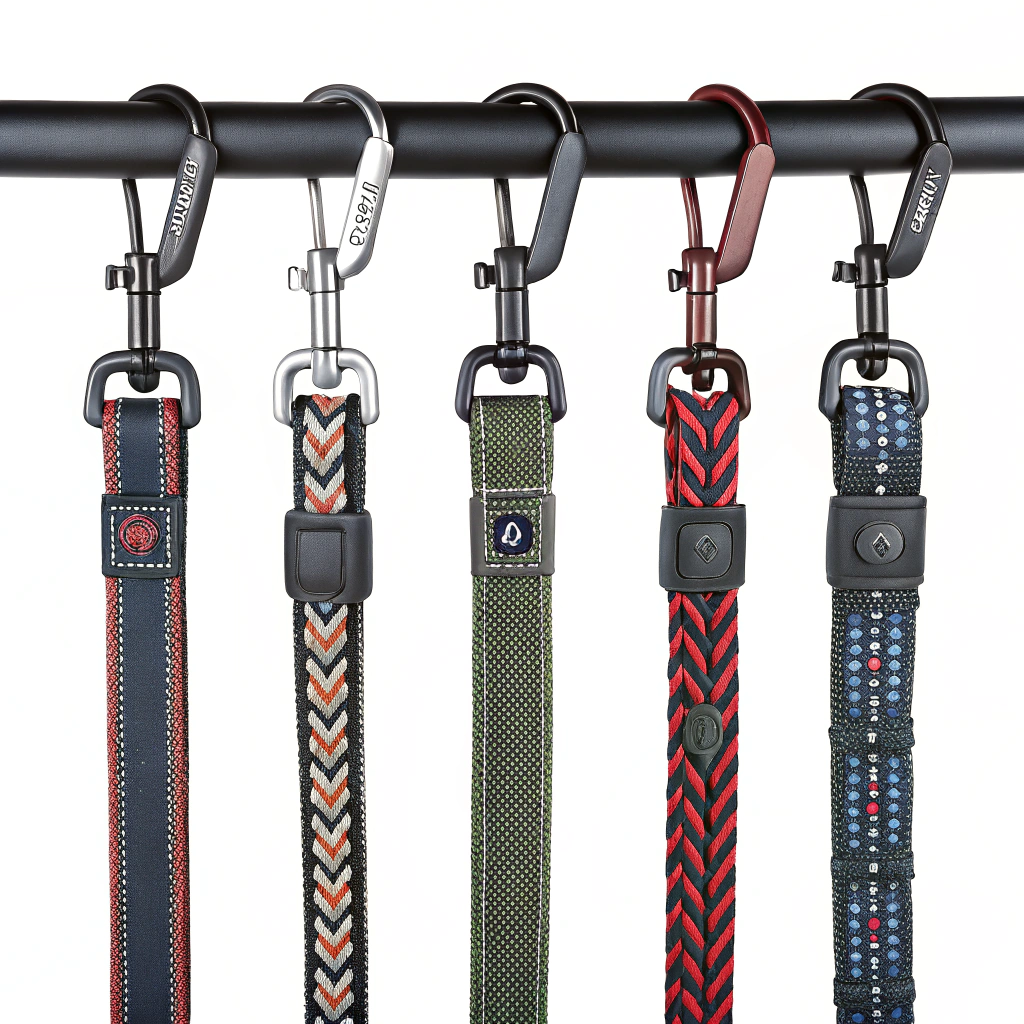
Through my work consulting with pet product manufacturers and my personal experiences with different dogs, I’ve developed a comprehensive understanding of how leash design affects functionality. Beyond material considerations, the leash type significantly impacts control, training effectiveness, and overall walking experience.
Matching Leash Types to Specific Needs
Different leash designs serve various purposes, and choosing the right type can make walking more enjoyable for both you and your dog:
-
Standard Flat Leashes (4-6 feet)
These remain the most versatile option for everyday use. During product testing sessions, I observed that the 6-foot length provides an ideal balance between freedom and control for most dogs. The flat design distributes pressure evenly and is less likely to cause rope burns compared to rounded options. -
Traffic Leashes (1-2 feet)
These short leashes or leash handles keep your dog close in crowded or high-traffic areas. I always recommend having a traffic handle option (either as a separate leash or as part of a dual-handle design) for urban environments or veterinary visits. The short length provides immediate control when needed. -
Retractable Leashes
While convenient for allowing dogs more freedom in open spaces, these come with significant safety concerns. The internal mechanisms I’ve examined during manufacturing tours vary greatly in quality. If using a retractable leash, material becomes even more important—look for models with durable tape rather than cord designs. -
Adjustable Length Leashes
These offer multiple fixed-length options within a single leash. After testing various designs, I found that the ability to adjust between 3-6 feet provides excellent versatility for different environments without sacrificing control. The best designs use high-quality hardware that doesn’t slip when pressure is applied. -
Hands-Free Leashes
These belt or shoulder-attached systems are ideal for runners or those needing free hands. The material needs for these leashes are particularly demanding, as they must withstand lateral forces different from standard leashes. During development consultations, I emphasize reinforced stitching and premium materials for these designs. -
Training Long Lines (15-50 feet)
Used primarily for recall training and giving controlled freedom, these specialized leashes require carefully selected materials that minimize weight while maintaining strength. I’ve used these extensively for training sessions, and the difference between a quality long line and a cheap one is immediately apparent in handling and control. -
Martingale Leashes
These These These combination collar-leash systems provide gentle control for dogs1 that might slip out of standard collars
When consulting with manufacturers on new leash designs, I emphasize that the intended use case should drive material selection. For standard walking leashes, durability and hand comfort take priority. For specialty applications like water activities or tracking, more specific material properties become essential.
My personal preference after trying countless options is a dual-handle leash made from high-quality nylon with a traffic handle near the clip. This design offers versatility for different situations while maintaining consistent control.
Is Tape or Cord Better for Dog Leash?
The first time my dog’s retractable cord leash wrapped around my leg during a sudden sprint, I learned the painful way about the importance of this choice.
Tape is generally better than cord for dog leashes, especially retractable ones. Tape distributes force over a wider area, reducing cut and burn risks during sudden pulls. It’s also more visible, less prone to tangling, and typically more durable against abrasion, though it may be slightly heavier than cord.
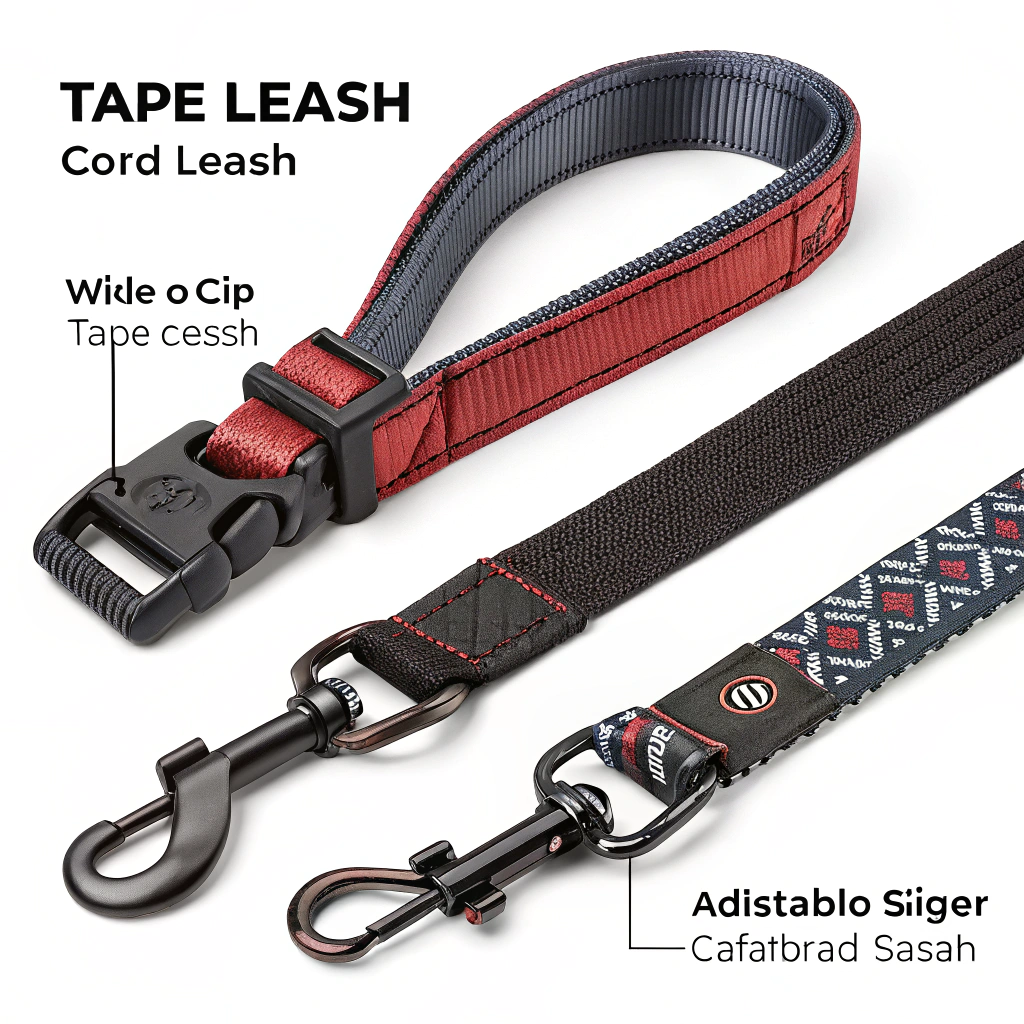
Having worked with manufacturers who produce both tape and cord mechanisms for retractable leashes, I’ve gained insight into the engineering considerations behind each option. The differences extend beyond simple preference and directly impact both safety and functionality.
Technical Comparison: Tape vs. Cord Leashes
The debate between tape and cord designs involves several technical considerations that affect performance:
| Feature | Tape Design | Cord Design |
|---|---|---|
| Width/Diameter | Typically 1/2" – 1" wide | Usually 2-3mm in diameter |
| Force Distribution | Distributed across width | Concentrated on small area |
| Visibility | Higher visibility | Lower visibility |
| Weight | Slightly heavier | Lighter |
| Tangle Resistance | Less prone to tangling | More prone to tangling |
| Abrasion Resistance | Generally better | Wears faster on rough surfaces |
| Injury Risk | Lower risk of cuts/burns | Higher risk of cuts/burns |
| Retraction Mechanism | Requires larger housing | Fits in smaller housing |
| Water Absorption | Can absorb water | Less water absorption |
| Freeze Risk | Can stiffen when wet & cold | Less affected by cold |
During product testing sessions, I’ve observed how these differences play out in real-world scenarios. The most significant advantage of tape designs is their safety profile. When a dog suddenly pulls or when the leash wraps around skin, tape distributes the force across a wider area, substantially reducing the risk of cuts or friction burns compared to thin cords.
From a manufacturing perspective, tape mechanisms require more material and slightly larger housings but offer better durability against everyday abrasion. The wider surface area contacts the ground differently than cord designs, resulting in less concentrated wear patterns. In durability tests I’ve witnessed, tape designs typically outperform cord versions when dragged across rough concrete or asphalt—common scenarios during everyday walks.
For retractable leashes specifically, I always recommend tape designs for safety reasons. The visibility factor also shouldn’t be underestimated—the wider tape is much easier for both humans and other dogs to see, reducing tripping hazards and entanglement risks in multi-dog environments.
The only scenarios where cord designs might be preferable are in extremely lightweight applications for very small dogs, where the slightly reduced weight and smaller housing size might provide ergonomic advantages for the handler. However, even in these cases, the safety trade-offs should be carefully considered.
Based on both technical analysis and practical experience, tape designs represent the superior choice for most dog owners, particularly in retractable leashes where the risks associated with cord designs are most pronounced.
Conclusion
The best dog leash material depends on your specific needs—nylon offers affordability and versatility, leather provides comfort and longevity, and biothane excels in wet conditions, while tape designs are generally safer than cord options for all leash types.
-
Learn about the positive impact of gentle control techniques on dog training and overall behavior.
provide gentle control for dogs that might slip out of standard collars provide gentle control for dogs that might slip out of standard collars. The material at the collar portion needs particular attention to ensure it applies even pressure without causing discomfort. ↩ ↩ ↩ ↩
